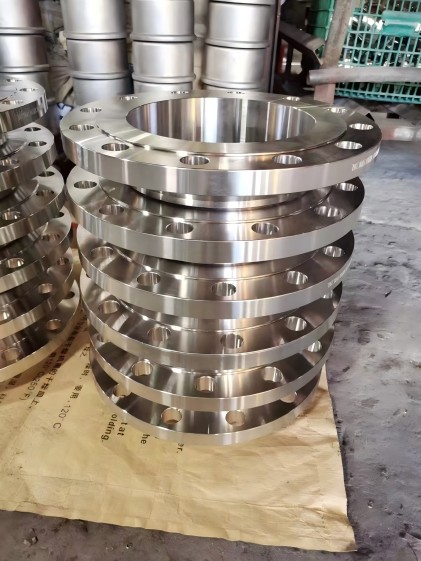Stainless steel flanges are commonly used in pipe connections, and their functions are as follows:
• Connecting pipelines: two sections of pipelines can be firmly connected, so that the pipeline system forms a continuous whole, widely used in water, oil, gas and other long-distance transmission pipeline system.
• Easy installation and maintenance: Compared with permanent connection methods such as welding, stainless steel flanges are connected by bolts, and there is no need for complex welding equipment and technology during installation, so the operation is simple and fast. When replacing pipe parts for later maintenance, you only need to remove the bolts to separate the pipe or equipment connected with the flange, which is convenient for maintenance and replacement.
• Sealing effect: Between the two stainless steel flanges, sealing gaskets are usually placed, such as rubber gaskets, metal wound gaskets, etc. When the flange is tightened by the bolt, the sealing gasket is squeezed to fill the small gap between the sealing surface of the flange, thereby preventing the leakage of the medium in the pipeline and ensuring the tightness of the pipeline system.
• Adjust the direction and position of the pipeline: during the design and installation of the pipeline system, it may be necessary to change the direction of the pipeline, adjust the height or horizontal position of the pipeline. Stainless steel flanges can be used with different angles of elbows, reducing pipes and other pipe fittings to achieve flexible adjustment of the direction and position of the pipeline.
Stainless steel flange processing technology is generally as follows:
1. Raw material inspection: According to the corresponding standards, check whether the hardness and chemical composition of stainless steel materials meet the standards.
2. Cutting: According to the size specifications of the flange, through the flame cutting, plasma cutting or saw cutting, after cutting to remove burrs, iron oxide and other impurities.
3. Forging: heating the cutting blank to the appropriate forging temperature, forging with air hammer, friction press and other equipment to improve the internal organization.
4. Machining: When roughing, turn the outer circle, inner hole and end face of the flange, leave 0.5-1mm finishing allowance, drill the bolt hole to 1-2mm smaller than the specified size. In the finishing process, the parts are refined to the specified size, the surface roughness is Ra1.6-3.2μm, and the bolt holes are reamed to the specified size accuracy.
5. Heat treatment: eliminate the processing stress, stabilize the size, heat the flange to 550-650 °C, and cool with the furnace after a certain time.
6. Surface treatment: Common treatment methods are electroplating or spraying to enhance corrosion resistance and beauty of the flange.
7. Finished product inspection: according to relevant standards, using measuring tools to measure dimensional accuracy, checking surface quality through appearance, using non-destructive testing technology to detect internal defects, to ensure conformity.


Post time: Jan-17-2025
